The Megane E-Tech is more than what it seems. It holds its range, recharges quickly, looks good and most importantly to anyone who wants to get more out of driving than just getting from A to B, it drives very well indeed. The steering is well weighted, not overly light which can be a trait in the class. There’s plenty of standard kit, it’s comfortable and offers decent passenger space.
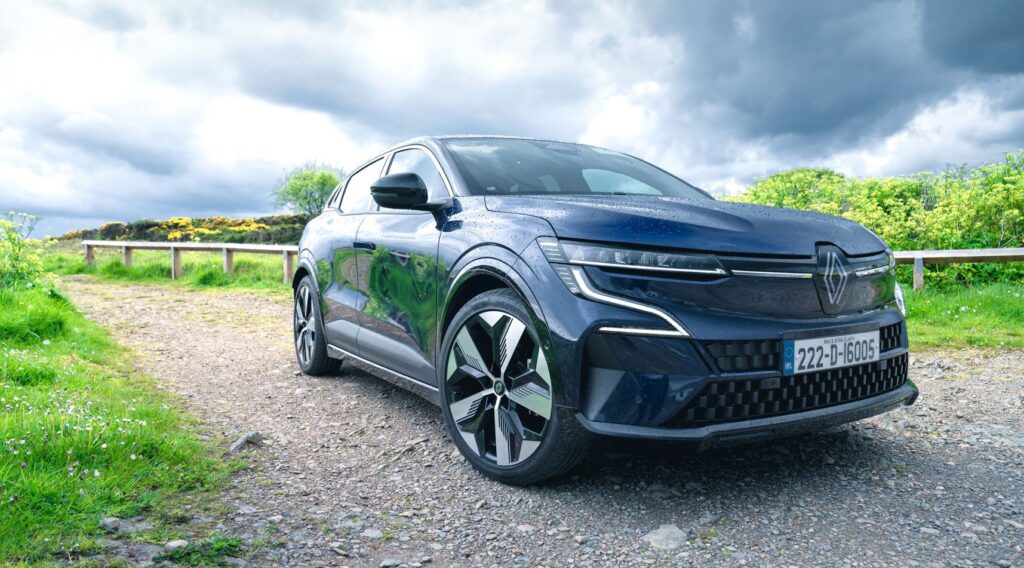
Special mention : Renault makes driving an EV fun with the Megane, looks great inside and out. The keyless entry works seamlessly.
Needs work : The three stalks on the right hand side of the steering wheel tend to get mixed up while driving as you can’t really see them. Rear bench could do with more leg and knee room for adults, boot has a big step, seats don’t fold flat and seat material scuffs easily.
| BHP 220 hp | Electric / Auto |
| 0-100 km/h in 7.5 seconds | Road Tax €120 |
| Price: from €37,495 As specc’d €47,795 | Boot Space 440 – 1,332 litres |
Every Renault Megane E-Tech in the lineup comes with a 220 hp electric motor powering the front wheels getting it from 0-100km/h in 7.5sec, it’s a shame the Cupra Born doesn’t have the same dynamics and lightness to it, giving it the edge it’s missing to be a proper drivers car. The entry-level trim starts with 18” wheels and goes up to 20” on higher trims without affecting the ride quality too much. The suspension has a firmer edge than the MG4’s, giving the car tight body control, and potholes and expansion joints are dealt with quickly, with no pronounced aftershocks.
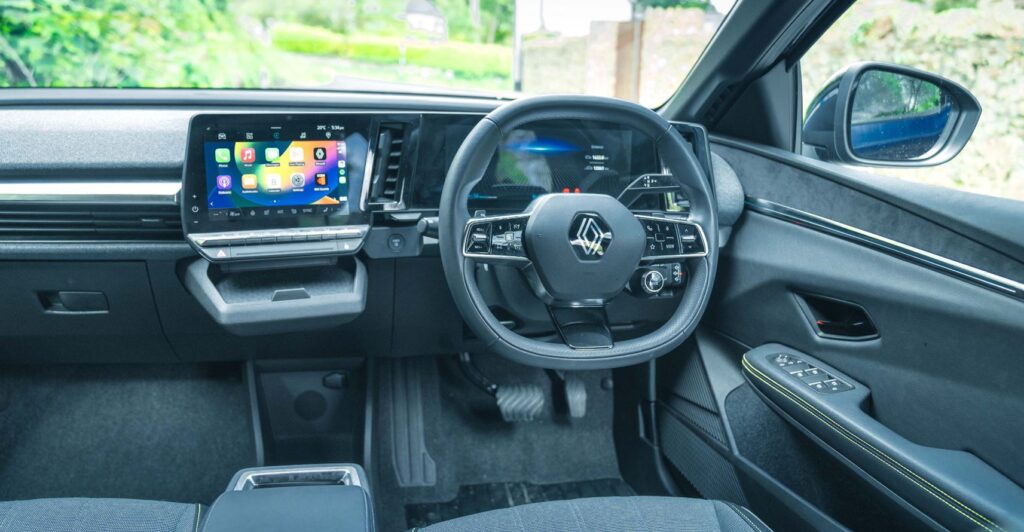
The regenerative braking system (which tops up the battery by recovering energy as you brake) has four strength settings, and you can switch between them using the plastic paddles on the wheel. At its stiffest setting you don’t really need to use the brake pedal, I’ve found these ‘hardest’ settings leave a slightly seasick feeling when driving.
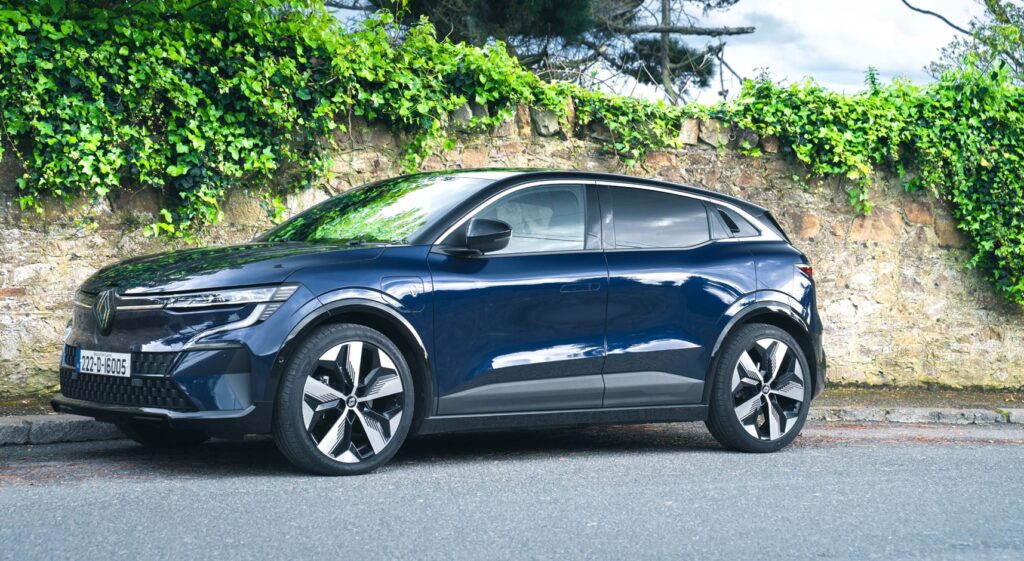
A charging rate of up to 130kW means a 10-80% battery top-up will take around 30 minutes. Using a 7kW home wall box, a full charge will take approx 10 hours.

Inside, the Megane E-Tech is very neat, tidy and uses soft-touch (recycled) materials in the right places. The hard plastics are saved for the low down areas that get kicked and knocked about the most.
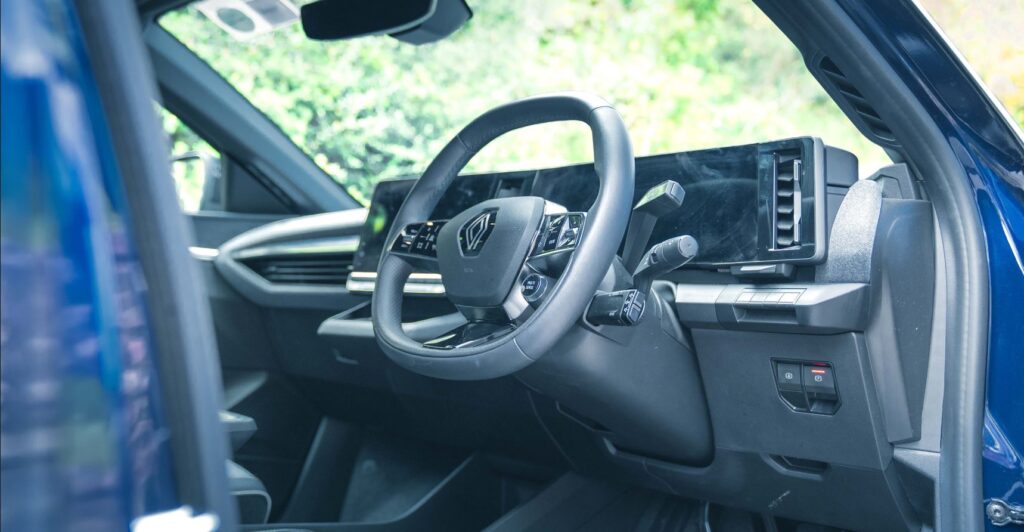
The 9.0” touchscreen is easy to reach, read, find functions and is much better to operate than the MG4 and ID3 screens. It did take a few tries but the Apple CarPlay function hooked up and also has the ability to mirror your smartphone. Once it recognised the phone, it started up every time without fail and played the last podcast or track I was listening to without any intervention. If you find yourself without a mobile signal, the top trim levels include Google services with Google Maps.
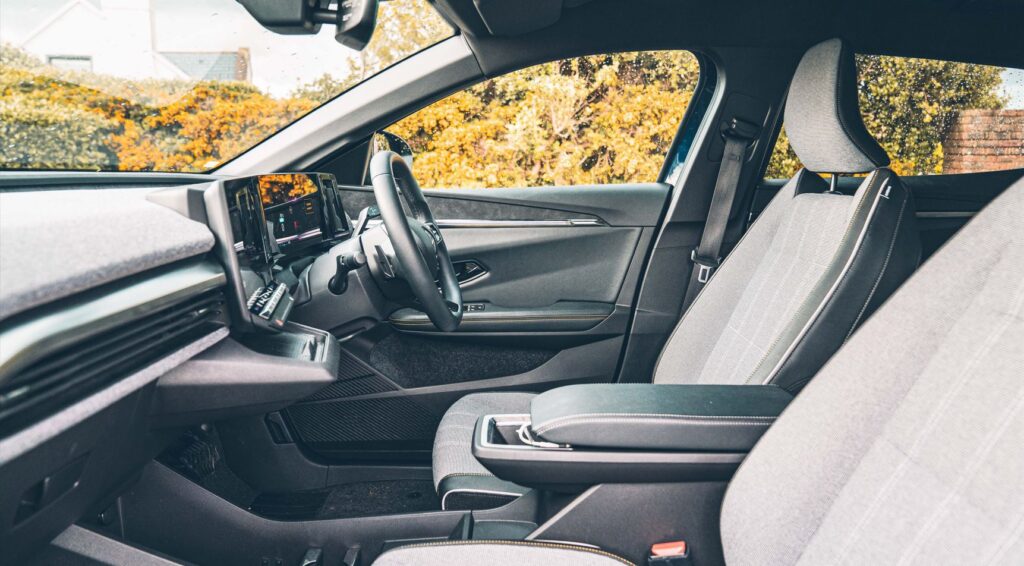
There’s a good view out the front but the shallow rear window means it’s restricted. There is however a rear-view mirror option to have another digital screen feed a wide angle view from a rear-mounted camera.
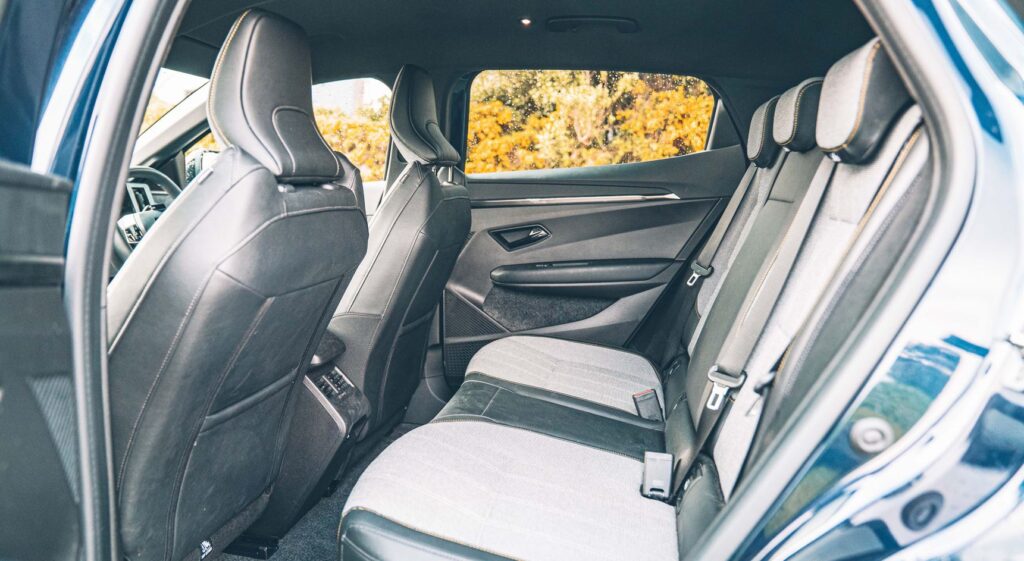
The space between the seat base and the top of the door opening is reduced due to the battery placement in the floor as well, so when you’re getting into the back or loading a youngster into their child seat it makes things that little bit tighter. There is a flat floor however which makes things a bit more comfortable for rear seat passengers. There’s plenty of head and leg room in the front of the Renault Megane E-Tech but the rear passenger legroom is tight.
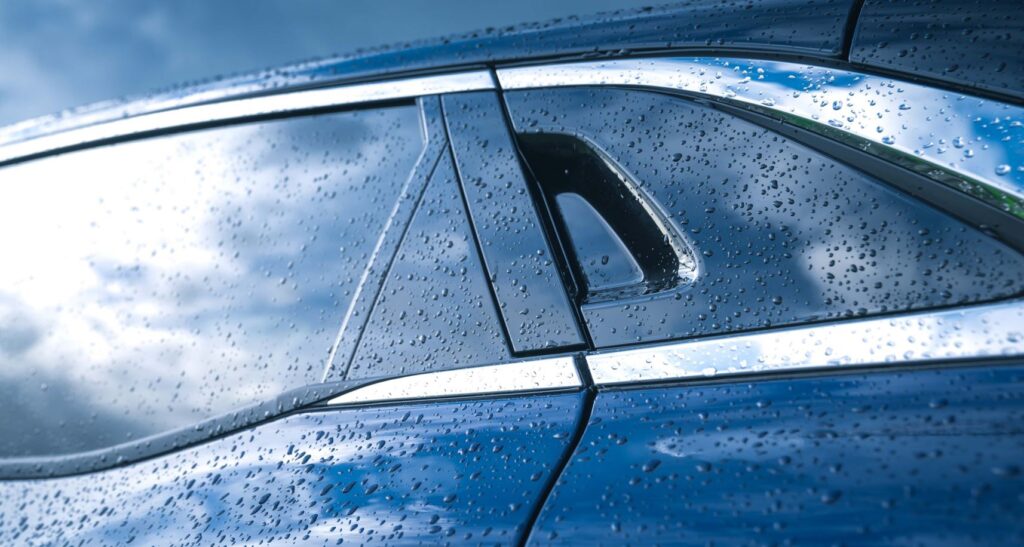
Things could be better in the back. Two six-footers will find their heads touching the roof lining and knee room is disappointing considering there’s a flat floor space there’s very little space for feet under the front seats too. In short, the Megane E-Tech’s main electric car rivals – including the Cupra Born, the MG4 and the VW ID 3 – are much more accommodating in the rear. However, the VW group could do with learning a few things from MG and Renault in the dynamics area.
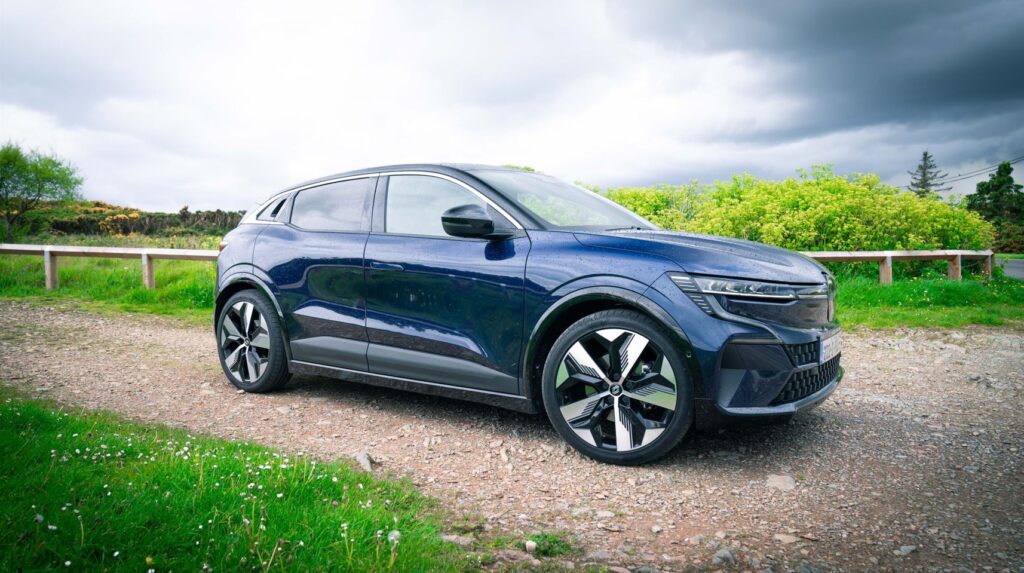
With plenty of seat and steering wheel adjustment, the Renault Megane E-Tech has a great driving position, squashy comfortable seats and the adjustability makes it easy to get settled for long journeys. On higher trims, there’s adjustable lumbar support which should really come as standard. You also get plenty of storage, large door bins, a thin tray in the dash for your phone (with wireless phone-charging on Techno trim) and large cubbies in the central armrest.
In the boot there’s around 440 litres of space which is more than the ID.3, and it’s deep, although the deep floor creates a high sill making lifting in larger items just that touch more awkward. You do at least get a handy cubby under the boot floor that’s large enough to store the charging cables.
The rear seats can be folded down in a 60/40 configuration, which is par for the course in this class. With the seat backs down, there’s a large step in the floor of the extended load bay, so sliding in long items won’t be the easiest. There’s no ski hatch, either, which you can get in the Born and ID 3.
Rear parking sensors and a rear-view camera come as standard on all models, with front sensors fitted on all but entry-level models. To make life even easier, the top two trims swap the standard reversing camera for one with a 360-degree view.
The E-Tech’s overall space in the rear could be better including the boot lip issue. It’s light, slow charging is good, it’s excellent at nipping through congested cities and has the dynamics to edge it above the ID.3, Cupra Born and Kia Niro.
